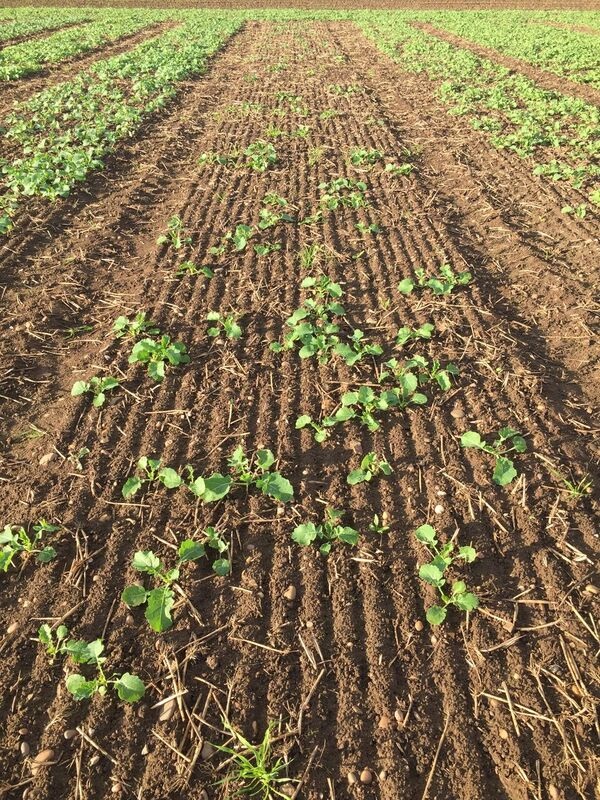- Home
- Knowledge library
- Integrating control strategies against soilborne rhizoctonia solani in oilseed rape (ICAROS)
Integrating control strategies against soilborne rhizoctonia solani in oilseed rape (ICAROS)
Summary
Rhizoctonia solani anastomosis group (AG) 2-1, which causes pre- and post-emergence damping off, is associated with significant establishment and yield losses in oilseed rape (OSR) worldwide. This project aimed to determine the spatial and temporal development of R. solani in relation to its host and the soil environment and develop integrative control strategies against damping off, inclusive of varietal and seed treatment control options.
A genome wide association study of 454 genotypes of the Brassica diversity ASSYST panel identified significant genome and transcriptome quantitative loci and candidate genes associated with resistance/susceptibility responses to AG2-1. This information can facilitate the future development of AG2-1 resistant OSR genotypes by identification of genetic markers for use in breeding programmes. Future genetic characterisation will enable understanding of the mechanisms associated with host resistance against R. solani. Screening of commercially available varieties identified moderately susceptible and susceptible varieties to AG2-1 infection.
Studies on the effect of soil type and soil water on the development and severity of disease by AG2-1 have shown that the pathogen causes more severe root disease in drier, sandy loam soils. However, under conditions of medium to high soil moisture, the pathogen is able to reach the host by spreading on the surface of the soil. Seed treatment against AG2-1 infection using sedaxane increases root length, volume and lateral root length of OSR seedlings and it is most effective under low to medium soil moisture, limiting AG2-1 surface spread in sandy loam soils.
This project provides the first report of quantification of establishment and yield losses associated with R. solani AG2-1. Artificial inoculation of AG2-1 reduced establishment by 60% and yield by 40%. AG2-1 infection also delayed flowering resulting in uneven crop development and fungicidal seed treatment negated this effect by reducing AG2-1 DNA in soil. Higher seed rate can partially compensate for the loss in establishment due to AG2-1 infection and plants treated with sedaxane, metalaxyl-M and fludioxonil (A21748 A) were less damaged by the cabbage stem flea beetle.
Significant yield response under natural infection was associated with moderate cumulative rainfall, an average temperature at GS10 greater than 16ºC and good emergence and establishment of the crop. Emergence and establishment were influenced negatively by pathogen DNA of R. solani in soil and positively by agronomy factors such as minimum cultivation, soil type, and genotype and seed treatment.
Downloads
PR616 Final project summary PR616 Final project report.pdfAbout this project
Related resources


